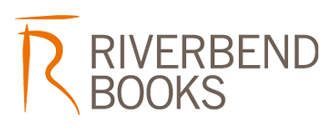Listen To My Trumpet (Elephant & Piggie HB)
Author(s): Mo Willems
Gerald is careful. Piggie is not.
Piggie cannot help smiling. Gerald can.
Gerald worries so that Piggie does not have to.
Gerald and Piggie are best friends.
In Listen to My Trumpet Piggie can't wait to play her new instrument for Gerald But is she ready to listen to his reaction?
Product Information
Commended for Capitol Choices: Noteworthy Books for Children and Teens (Up to Seven) 2013 and Parents Choice Awards (Spring) (2008-Up) (Picture Book) 2012.
This seventeenth entry in the indefatigable Elephant & Piggie series finds gray elephant and pink piglet once again cavorting before Willems' traditional big white backdrops. Piggie's excited about her new acquisition, a trumpet, which she makes a big to-do about before playing it for Gerald. The sounds she creates are rather abrasive: "Bluuuurrrk!" "Bl-ap!" "Vr-ip!" Yet she continues to honk and squawk while Gerald looks increasingly worried. How is he going to tell his friend that her music is no good? He tries to pad his evaluation with some faint praise ("You, uh, hold your trumpet very well"), but eventually he lays out the truth. Thankfully, Piggie is not mad. Gerald has merely misunderstood: she wasn't trying to make music, she was trying to "speak Elephant." This may be one of the lesser entries in the series, but the bar is so high that this remains irrepressibly fun. And who can resist that double-page spread in the middle filled with Piggie's playing? "Blap-zap-blap-BLONK!," indeed. - Daniel Kraus Booklist" PreS-Gr 2 Gerald and Piggie are back in another easy reader that manages to touch on the complex issues of communication, honesty among friends, and shared experiences. Piggie is in proud possession of a loud, shiny trumpet, which she can't wait to play for Gerald. As he sits and listens, she proceeds to struggle her way through a demonstration, which sounds less like music and more like Gerald's "Aunt Molly with a cold." But as painful as it is for Gerald to listen to Piggie play, he knows that telling her how bad she is will be even more torturous. His anguish is clearly visible but tell her he must, because that's what friends are for. Willems squeezes so much information and emotion out of the barest of illustrations: Gerald sticking his tongue out in concentration as he maneuvers his bulk onto the tiny stool Piggie has provided for him reminds readers of what a physically odd couple they are; Piggie reverently embracing her trumpet before proceeding to blast the heck out of it speaks to her true motivation for getting it in the first place, as is revealed in the surprisingly sweet ending. This winning pair continues to delight and charm readers with a wisdom that seems hard won by adults, but is second nature to children. Kara Schaff Dean, Walpole Public Library, MA SLJ" Fans of the obstreperous Piggie will know that she certainly doesn't need an instrument to trumpet her affections for the less demonstrative Gerald, but grab one she does, commanding the elephant to sit on a comically diminutive three-legged stool while she attempts to coax notes out of her shiny new trumpet. The bleats become an obnoxious but subtly ingenious phonics lesson, as her instrument emits variations of consonant blends that combine with easily pronounceable endings to form nonsense words that lack meaning but nonetheless show how words work. Gerald's attempts to be supportive without hurting his friend's feelings teach an important emotional lesson as well, as he flounders to be encouraging and honest at the same time; he lauds Piggie's efforts as enthusiastic but has to acknowledge that they are not musically pleasing. The punchline strikes a beautiful note even if Piggie doesn't, as Willems manages yet again to pull off the perfect dual audience move: Gerald's adult-like misunderstanding of Piggie's intentions and the revelation of Piggie's actual motive will ring true to youngsters and will elicit surprised and delighted eeps from older reading partners at the unaffected sweetness of childlike empathy and friendship. The consistency of the color-coded sound bubbles and the clear depiction of emotional states, conveyed through comic exaggeration of the deceptively simple figure drawings, will help even the newest readers track the narrative line as they practice their emergent literacy skills. KC BCCB"
Mo Willems (www.pigeonpresents.com), a number one "New York Times "best-selling author and illustrator, has been awarded a Caldecott Honor on three occasions (for "Don't Let the Pigeon Drive the Bus!," "Knuffle Bunny: A Cautionary Tale," and "Knuffle Bunny Too: A Case of Mistaken Identity"). "Don't Let the Pigeon Drive the Bus!" was also an inaugural inductee into the Indies Choice Picture Book Hall of Fame. And his celebrated Elephant Piggie early reader series has been awarded the Theodor Seuss Geisel Medal on two occasions (for "There Is a Bird on Your Head! "and "Are You Ready to Play Outside?") as well as an Honor (for We Are in a Book!). Other favorites include "Naked Mole Rat Gets Dressed" and "City Dog, Country Frog," illustrated by Jon J Muth. Mo began his career on "Sesame Street," where he garnered six Emmy Awards. He lives with his family in Massachusetts.
General Fields
- :
- : Hyperion Press
- : Hyperion Books for Children
- : 0.299371
- : January 2012
- : 231mm X 173mm X 10mm
- : United States
- : books
Special Fields
- : Mo Willems
- : Hardback
- : 712
- : Mo Willems
- : English
- : E
- : 64
- : colour illustrations

